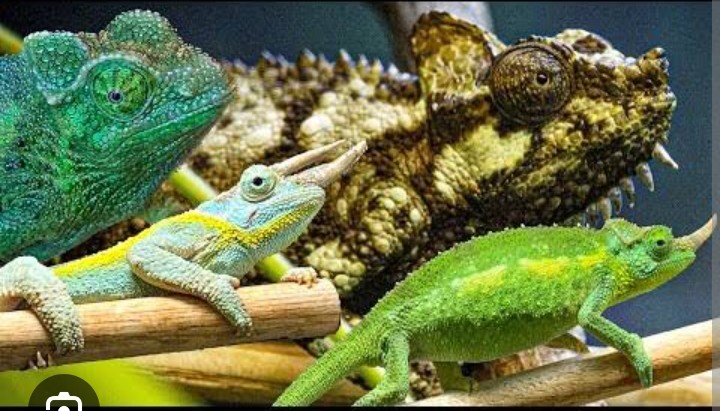How To Start and Make Millions Of Money From Chameleon Farming in Kenya.
What is Chameleon Farming
Chameleon farming involves breeding and raising chameleons for various purposes, such as pets, research, or commercial sale of the animals or their byproducts. This can include providing suitable habitats, food, and care for the chameleons to ensure their health and well-being. Chameleon farming can be a specialized and rewarding endeavor, especially for those interested in reptiles and conservation.
Read more:China Cat Farm: Why Chinese Farmer Raise Millions of Cat For Delicious Meat.
Starting Capital.
Starting a chameleon farming venture requires careful planning and a modest investment. With a starting capital, estimated between a few hundred to several thousand dollars, you can embark on this exciting endeavor. This capital primarily covers essential elements such as suitable enclosures, food and supplements, heating and lighting equipment, veterinary care, permits, and licensing.
Enclosures are crucial, providing the necessary environment for chameleons to thrive. Depending on the scale, you may need simple setups or more elaborate, climate-controlled environments. Chameleons require a varied diet, including insects and sometimes plants, necessitating regular purchases of food and supplements.
Maintaining appropriate temperature and lighting conditions is vital. This requires the purchase of heating lamps, UVB lights, and other equipment. Budgeting for veterinary care ensures the well-being of your chameleons.
Additionally, you’ll need to obtain permits and licenses, which can vary in cost depending on your location. Lastly, marketing and advertising expenses are essential if you plan to sell your chameleons or their byproducts.
Overall, careful planning and a modest investment can set you on the path to a successful chameleon farming venture.
Read more:How to Start Snake Farming in Kenya and Make Millions of Money
Legal requirements in Kenya
In Kenya, chameleon farming is regulated by the Wildlife Conservation and Management Act of 2013. To engage in chameleon farming, individuals must obtain a permit from the Kenya Wildlife Service (KWS) specifying the number and species of chameleons they are allowed to keep.
The facilities where chameleons are kept must meet certain standards to ensure the well-being of the animals, including appropriate enclosures, heating, lighting, and ventilation. Some species of chameleons are protected and cannot be kept in captivity without special permission.
Farmers are required to keep detailed records of their chameleons, including their origin, acquisition, and any transfers or sales. Additionally, facilities may be subject to inspections by KWS officials to ensure compliance with regulations.
Depending on the scale of the operation, farmers may need to conduct an environmental impact assessment to assess the potential impact of their farming activities on the environment.
Breeds of chameleons
The most commonly kept chameleon species include Jackson’s chameleon, panther chameleon, veiled chameleon, four-horned chameleon, Meller’s chameleon, Veiled chameleon, Oustalet’s chameleon, Fischer’s chameleon, flap-necked chameleon, and the tiny pygmy chameleon. Other species belong to the Rhampholeon and Brookesia genera, but Jackson’s chameleon is the most preferred and popular breed among chameleon enthusiasts.
Read more:Importance Of Snake Wine in A Human Body.
Markets
Chameleons find their main markets in Europe, America, and Japan, where they are often sold in pairs as exotic pets. Advocates for the chameleon trade prefer specimens bred on farms over those caught in the wild, citing their better health and acclimatization to human interaction.
These farm-bred chameleons, typically sold at the F1 generation, command higher prices compared to their wild-caught counterparts. However, accessing the international market poses significant challenges due to stiff competition from well-established chameleon firms in Madagascar and Tanzania. Madagascar alone exports around 66,500 chameleons annually, comprising five different species.
Despite the potential, the local market in Kenya remains relatively small, with approximately 2000 chameleons sold annually. This limited demand is primarily driven by the expatriate community, which decorates their homes with chameleons. Expanding the local market faces obstacles related to prevailing beliefs and attitudes towards chameleons, which need to be addressed to stimulate market growth.
To export chameleons, farmers must navigate a complex regulatory process, including obtaining legal export and import papers. This involves seeking approval from the Kenya Wildlife Service (KWS) and complying with the Convention on International Trade in Endangered Species of Wild Fauna and Flora (CITES) and the export requirements of the destination countries.
Prices
The prices of chameleons in Kenya can vary depending on factors such as the species, age, size, and whether they are wild-caught or farm-bred.
Generally, a farm-bred chameleon can range from around 500 Kenyan Shillings (Ksh) to 10,000 Ksh or more, depending on the species and other factors. Wild-caught chameleons may be cheaper but are often considered less desirable due to the stress of capture and transportation. Prices can also vary based on the local market demand and availability of the chameleons.
